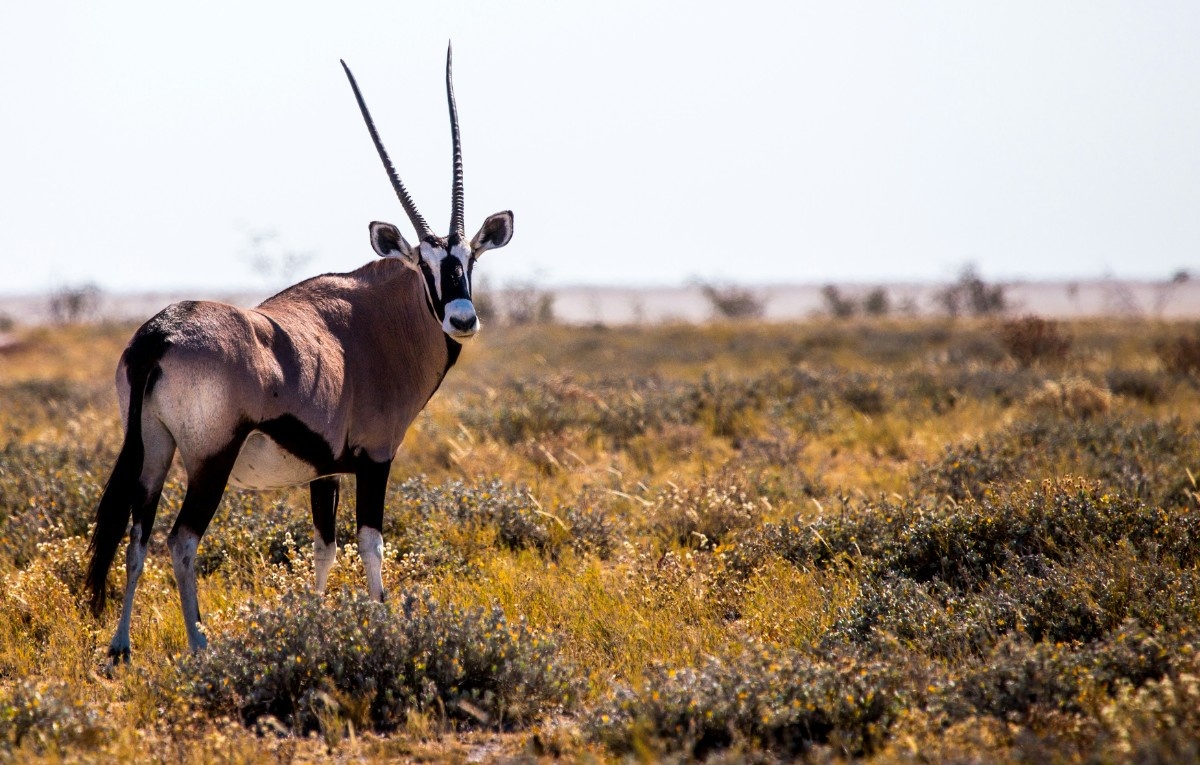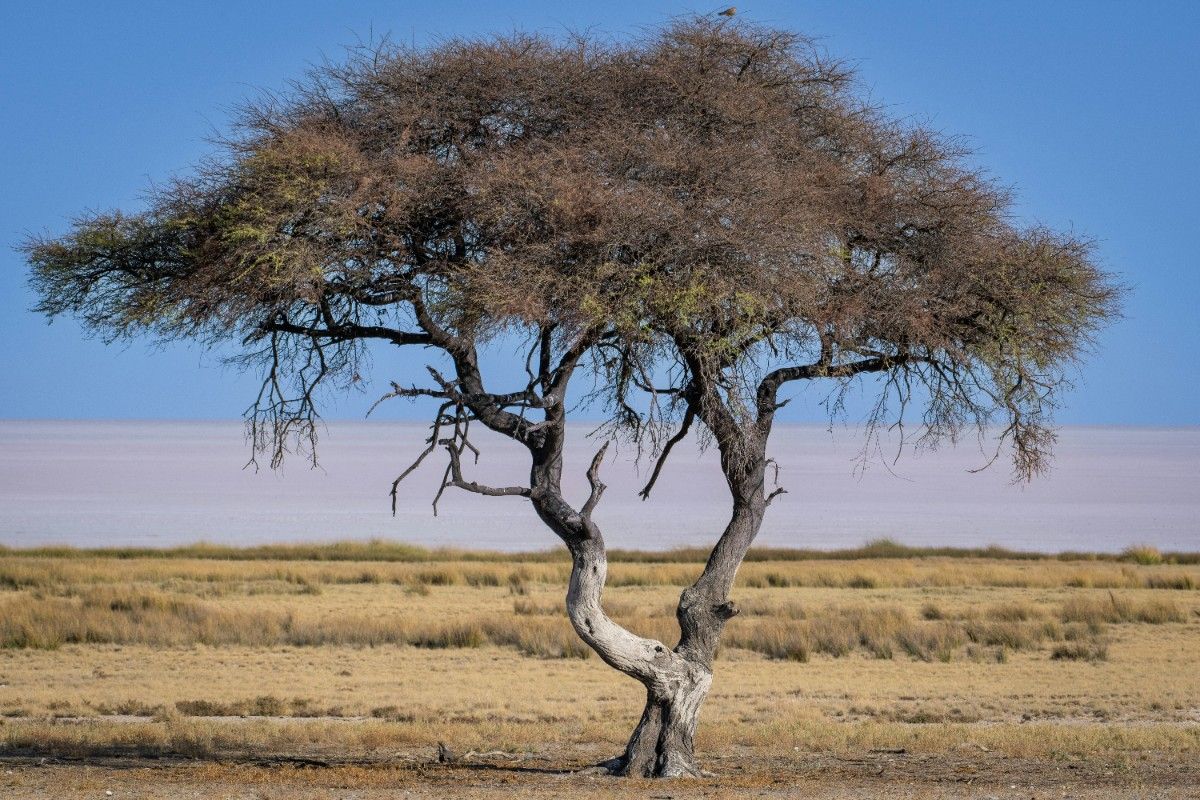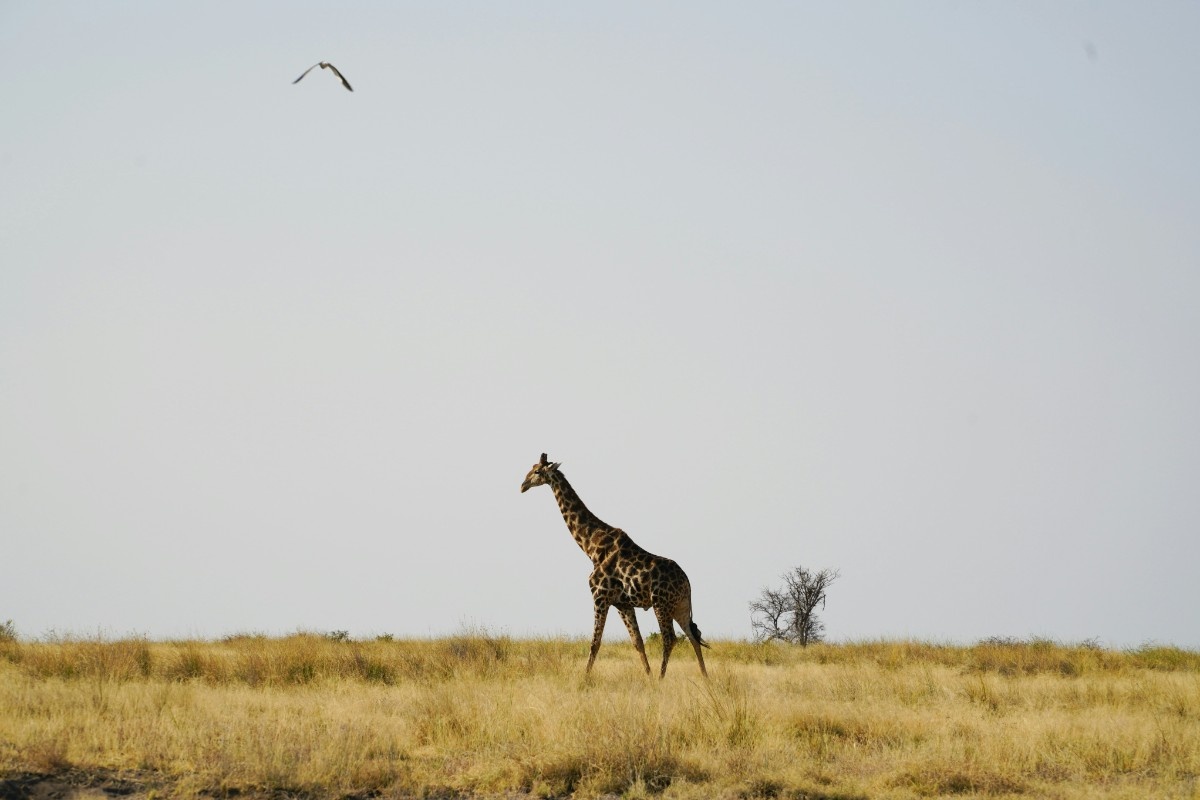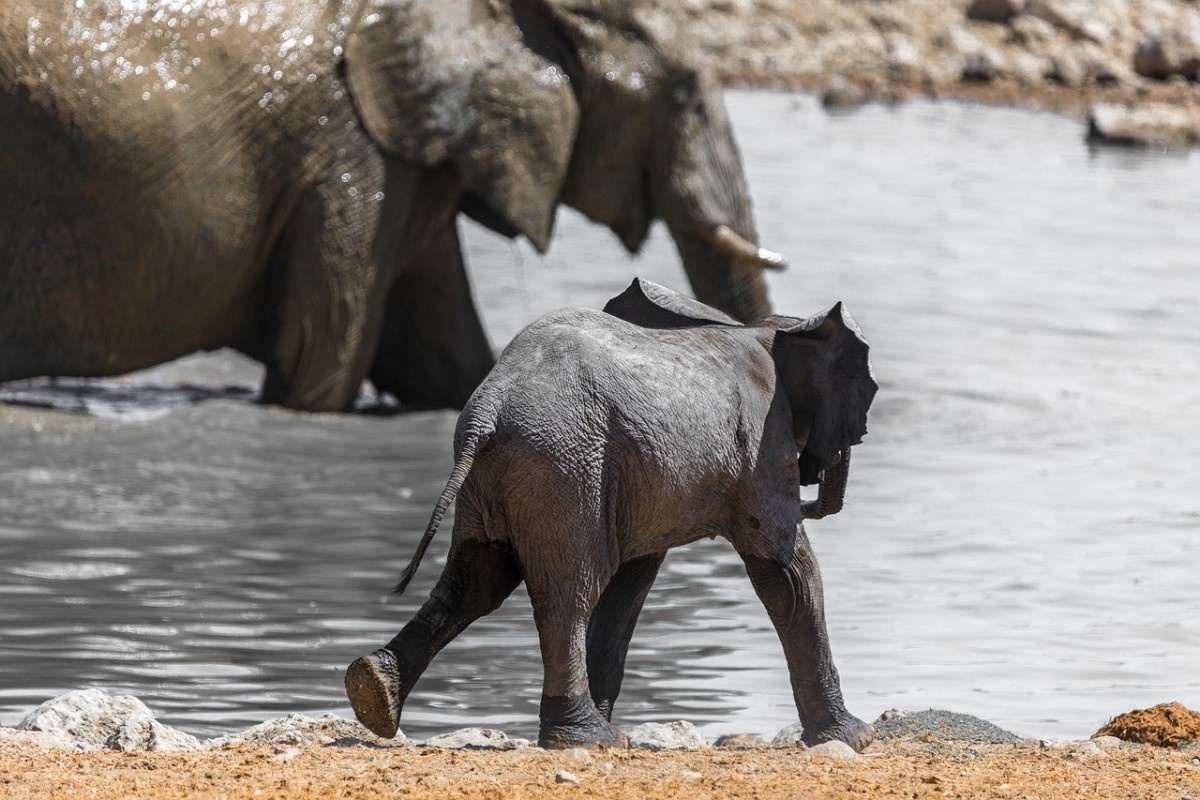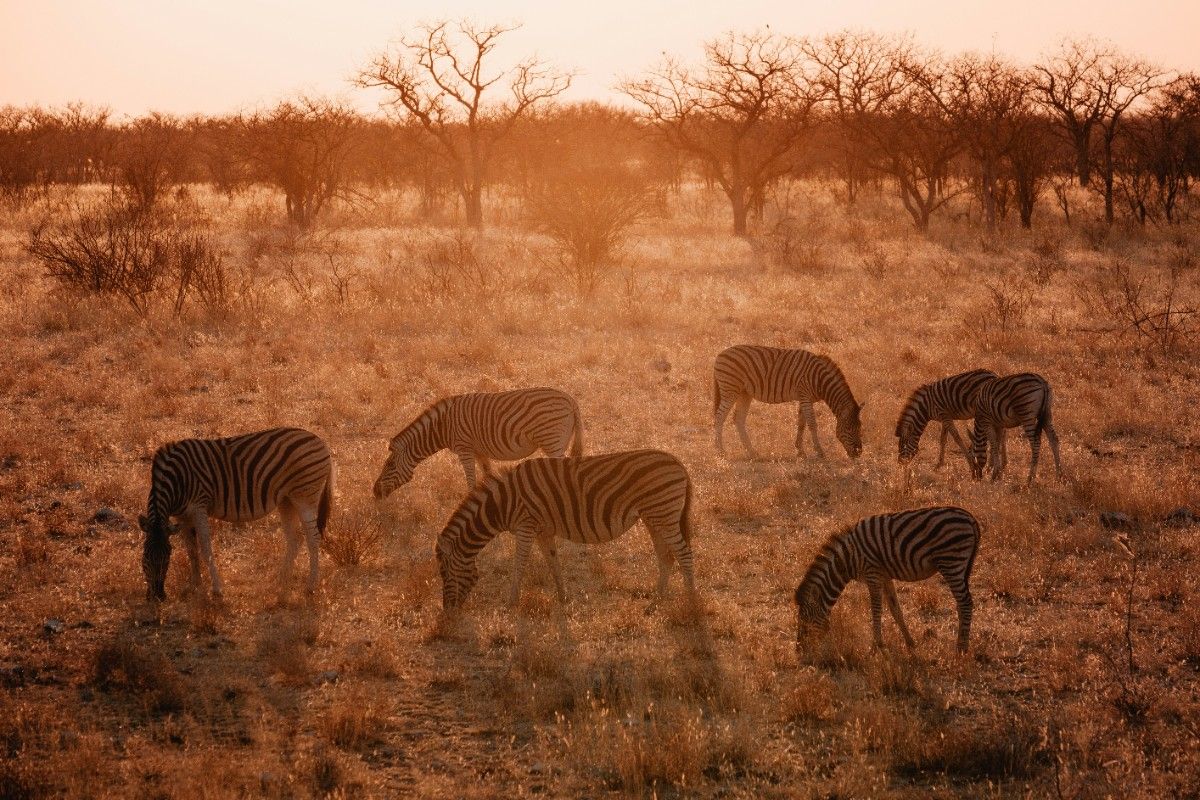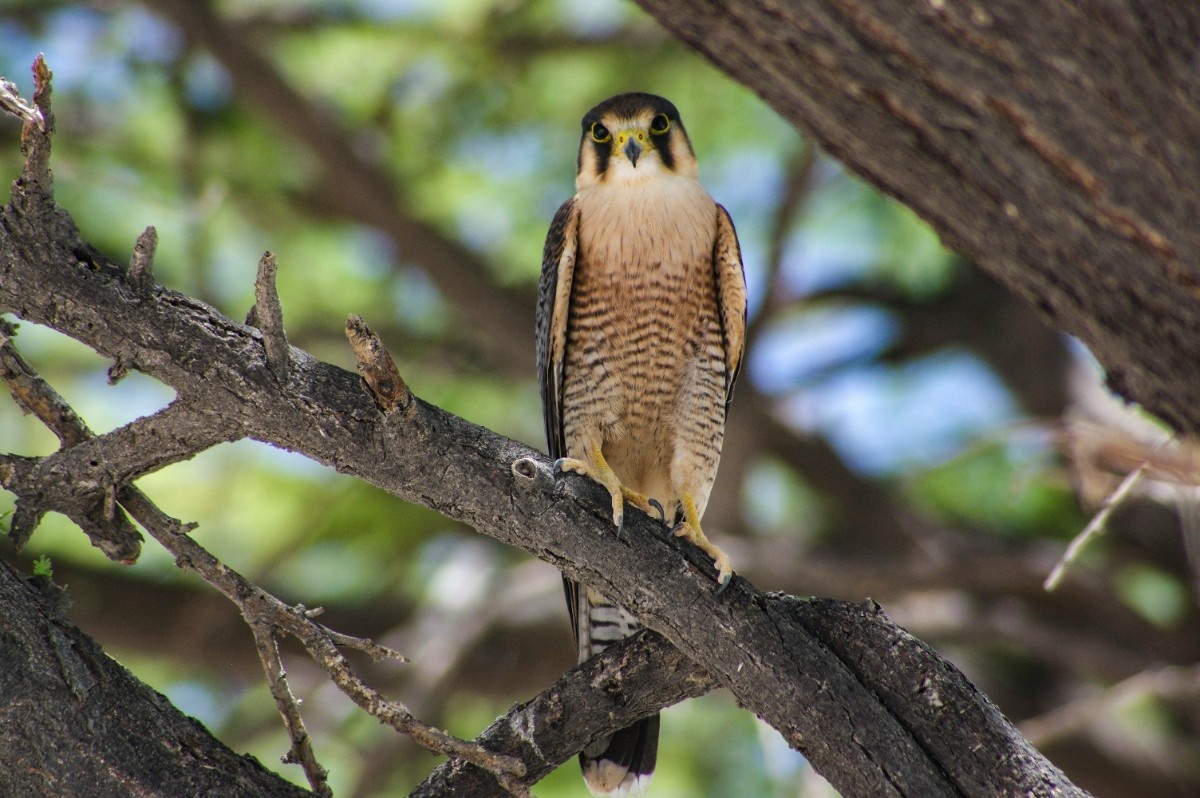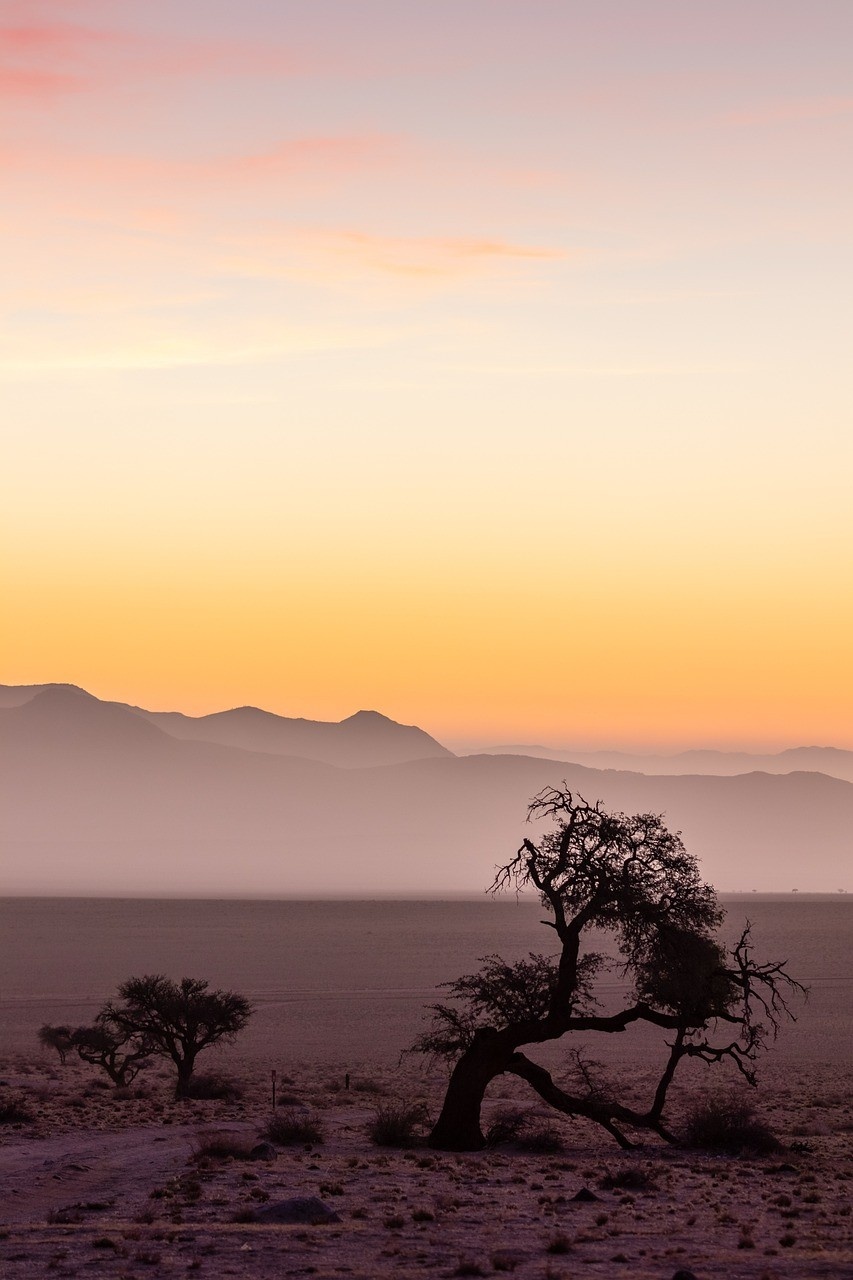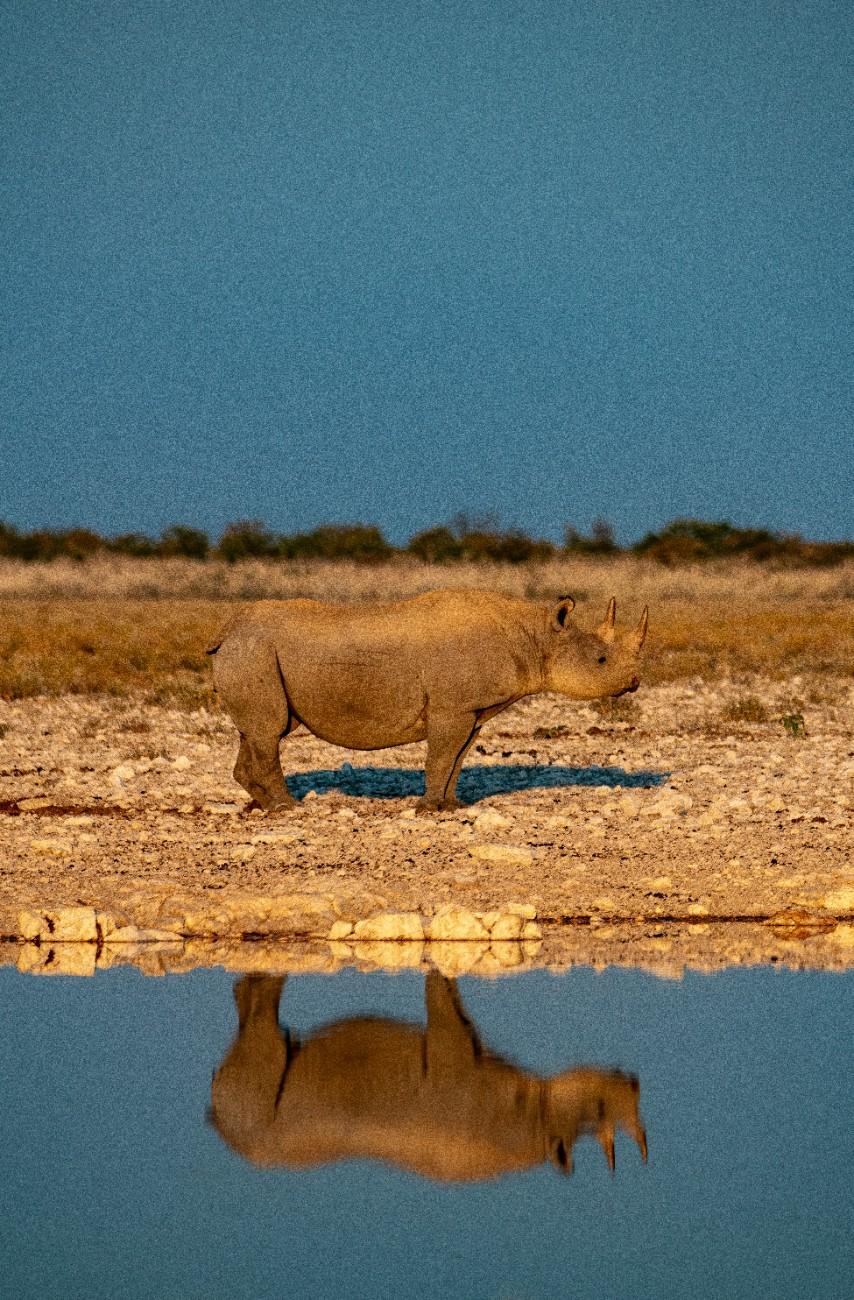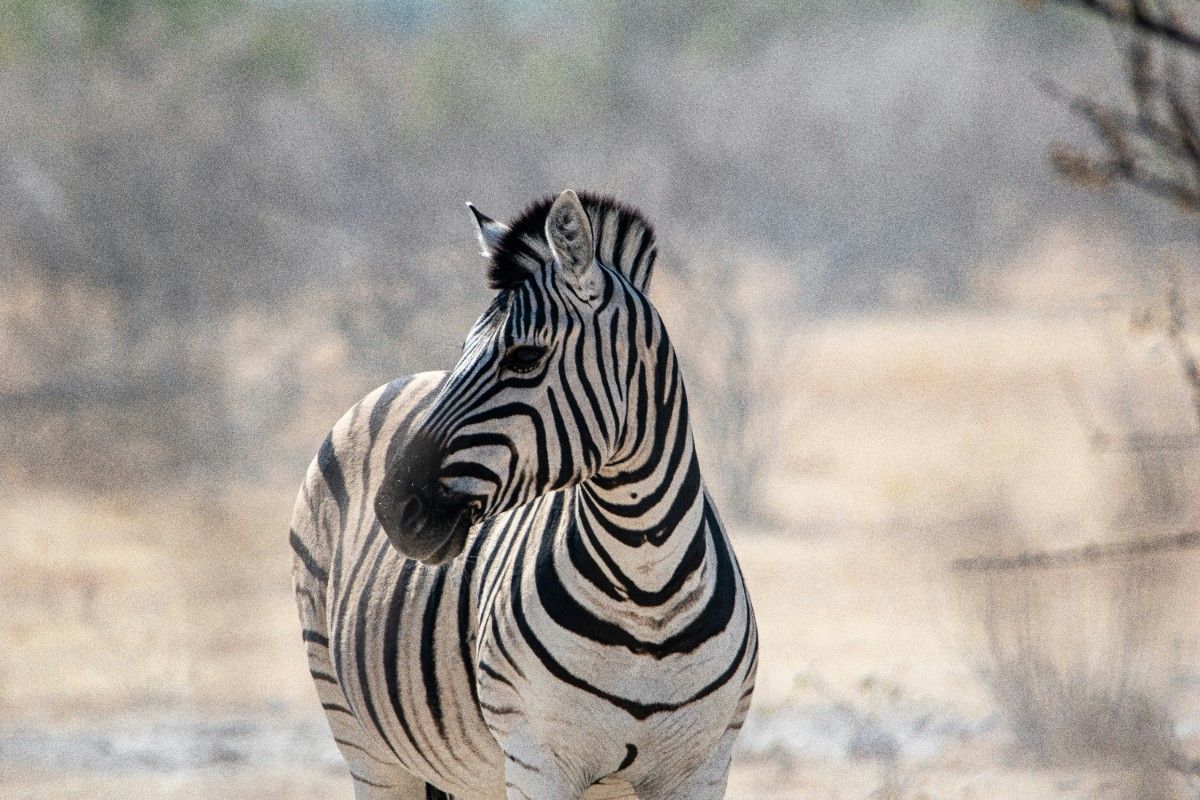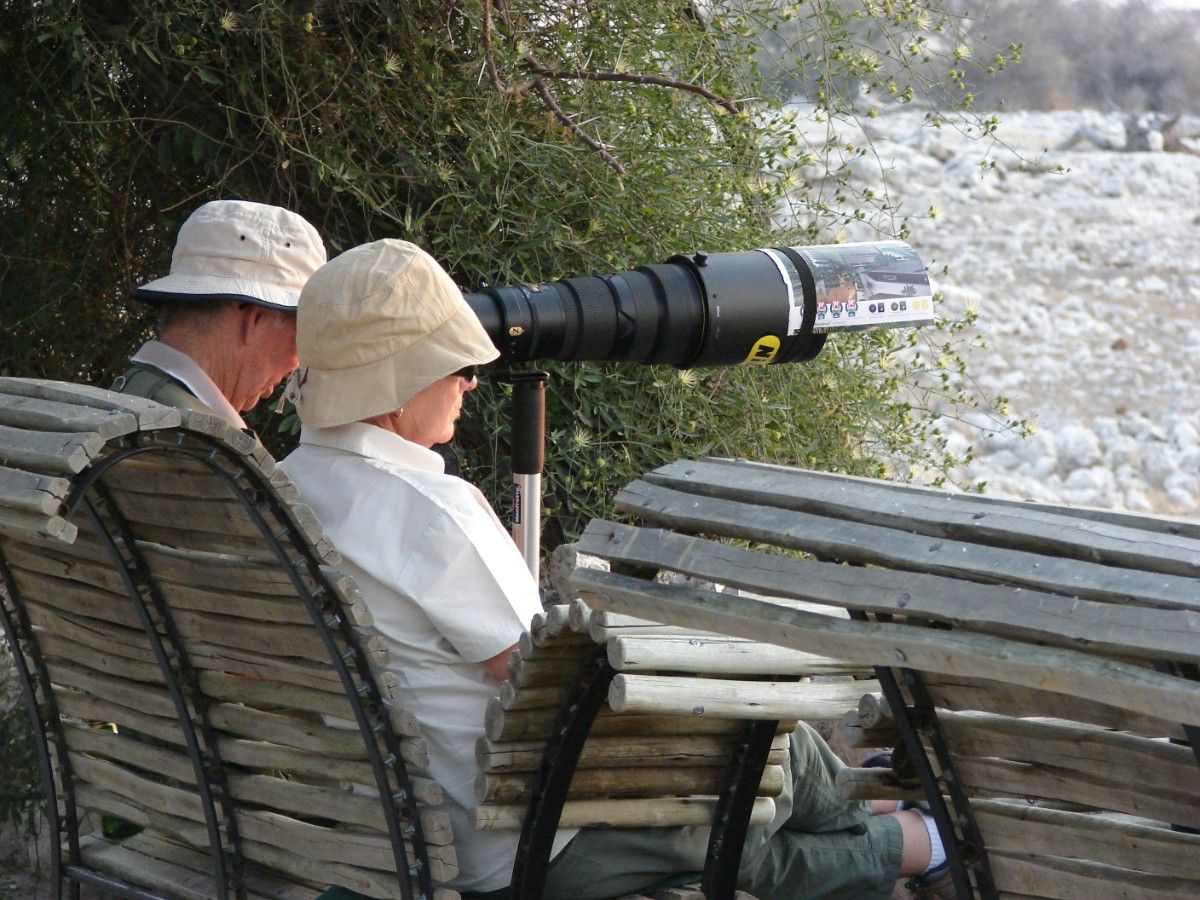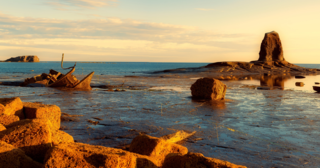Introduction to Etosha National Park
Overview of Etosha National Park
Etosha National Park, located in Namibia, is one of Africa's most spectacular wildlife destinations. Spanning an area of 22,270 square kilometres, this vast expanse of land is home to an incredible array of flora and fauna, making it a must-visit for nature enthusiasts and adventure seekers alike. The park's name, "Etosha," translates to "Great White Place," a fitting description for the expansive salt pan that dominates its landscape. This unique feature, along with the park's diverse ecosystems, creates a backdrop for unforgettable wildlife encounters and breathtaking scenic beauty.
Etosha National Park's history dates back to 1907 when it was first established as a game reserve by the German colonial administration. Over the years, the park has undergone various changes in size and management, but its core purpose of protecting Namibia's wildlife has remained steadfast. Today, Etosha is a beacon of conservation, attracting visitors from around the globe who come to witness its untamed wilderness and the remarkable creatures that call it home.
Accessibility and Infrastructure
One of the most striking aspects of Etosha National Park is its accessibility. The park is well-connected by a network of roads, making it easy for visitors to explore its various regions. Whether you choose to embark on a self-drive safari or join a guided tour, you'll have the opportunity to immerse yourself in the park's natural wonders and encounter its incredible wildlife at every turn.
The park features three main rest camps - Okaukuejo, Halali, and Namutoni - each offering a range of accommodation options, from comfortable chalets to camping sites. These rest camps serve as excellent bases for exploring the park, providing essential amenities such as fuel stations, restaurants, and shops. Additionally, several luxurious lodges are located within and around the park, offering top-notch facilities and unforgettable wildlife viewing experiences.
Etosha Pan: The Heart of the Park
At the heart of Etosha National Park lies the Etosha Pan, a massive salt pan that covers approximately 4,800 square kilometres. This expansive, flat landscape is the remnant of a prehistoric lake that dried up millions of years ago, leaving behind a shimmering, white surface that stretches as far as the eye can see.
During the dry season, the Etosha Pan is a parched and cracked expanse, with mirages dancing on the horizon. However, when the rains arrive, the pan transforms into a shallow lake, attracting thousands of flamingos and other water birds that come to feed and breed in its nutrient-rich waters. This seasonal metamorphosis is a testament to the resilience and adaptability of life in Etosha and offers visitors a chance to witness the park's ever-changing beauty.
The Iconic Wildlife of Etosha National Park
The Big Four: Elephants, Lions, Leopards, and Rhinos
Etosha National Park is renowned for its incredible wildlife, particularly its populations of the iconic "Big Four" - elephants, lions, leopards, and rhinos. These majestic creatures are among the park's most sought-after sightings, drawing visitors from around the world who hope to catch a glimpse of their raw power and beauty.
The park's elephant population is particularly impressive, with herds often seen congregating around the numerous waterholes that dot the landscape. Observing these gentle giants as they interact, play, and care for their young is an unforgettable experience that highlights the complex social dynamics of these remarkable animals.
Etosha's lions are another major attraction, with several prides calling the park home. These powerful predators are expertly adapted to the park's various habitats, from the open grasslands to the dense mopane woodlands. Visitors who are lucky enough to witness a lion hunt or a pride at rest will gain a newfound appreciation for the strength and grace of these magnificent cats.
Leopards and rhinos, while more elusive, are also present in Etosha National Park. The park's leopards are notoriously difficult to spot, as they are solitary and well-camouflaged, but patient and keen-eyed visitors may be rewarded with a sighting of these beautiful and mysterious cats. Rhinos, both black and white, are also found within the park's borders, and while they are critically endangered, conservation efforts have helped to protect and grow their populations in recent years.
Herbivores: Grazers and Browsers
In addition to its iconic predators, Etosha National Park is also home to a wide variety of herbivores, ranging from the diminutive damara dik-dik to the towering giraffe. These grazers and browsers play a crucial role in the park's ecosystems, shaping the landscape and providing prey for the park's carnivores.
Large herds of zebras, wildebeest, and springbok are a common sight in Etosha, particularly during the dry season when they congregate around the park's waterholes. The sight of these herds moving across the shimmering salt pan is a breathtaking spectacle that showcases the park's unique beauty and the delicate balance of its ecosystems.
Other notable herbivores found in the park include the elegant giraffe, the powerful eland, and the striking gemsbok, or oryx. Each of these species is perfectly adapted to the park's various habitats, from the open grasslands to the dense woodlands, and observing them in their natural environment is an educational and awe-inspiring experience.
Birdlife: A Haven for Avian Enthusiasts
Etosha National Park is a paradise for birdwatchers, boasting over 340 species of birds within its borders. From the colourful lilac-breasted roller to the massive ostrich, the park's avian inhabitants are a delight to observe and photograph.
The park's numerous waterholes attract a wide variety of water birds, such as flamingos, pelicans, and herons, creating a vibrant and ever-changing display of feathered beauty. During the wet season, when the Etosha Pan fills with water, thousands of flamingos descend upon the shallow lake to feed and breed, creating a stunning pink spectacle that is not to be missed.
Raptors are also well-represented in Etosha, with species such as the martial eagle, the tawny eagle, and the pale chanting goshawk frequently spotted soaring above the park's landscapes. These powerful birds of prey are a testament to the park's ecological health and diversity, and observing them in action is a thrilling experience for any nature lover.
Exploring the Diverse Landscapes of Etosha National Park
The Etosha Pan: A Shimmering Salt Flat
The most prominent feature of Etosha National Park is the expansive Etosha Pan, a vast salt flat that covers approximately 4,800 square kilometres. This shimmering, white landscape is the remnant of a prehistoric lake that dried up millions of years ago, leaving behind a striking and otherworldly terrain.
During the dry season, the Etosha Pan is a parched and cracked expanse, with mirages dancing on the horizon and dust devils swirling across its surface. The stark beauty of this desolate landscape is a testament to the harsh and unforgiving nature of the park's environment, and visitors who witness it firsthand will gain a newfound appreciation for the adaptability and resilience of the park's wildlife.
When the rains arrive, however, the Etosha Pan undergoes a remarkable transformation. The shallow depression fills with water, creating a temporary lake that attracts thousands of flamingos and other water birds. The sight of these vibrant pink birds against the shimmering blue water and the stark white salt pan is a breathtaking spectacle that showcases the park's ever-changing beauty.
Mopane Woodlands: A Haven for Wildlife
Beyond the salt pan, Etosha National Park is home to a variety of other diverse landscapes, each with its own unique character and ecological significance. One of the most prominent of these is the mopane woodland, a dense forest dominated by the mopane tree, a hardy and drought-resistant species that is perfectly adapted to the park's semi-arid climate.
The mopane woodlands are a haven for wildlife, providing food and shelter for a wide variety of species. Elephants, in particular, are drawn to these forests, as the mopane tree is one of their favourite food sources. Watching a herd of these majestic animals foraging among the trees is an unforgettable experience that highlights the incredible biodiversity of the park.
Other notable species found in the mopane woodlands include the stately kudu, the elusive leopard, and the rare black rhino. These animals are all perfectly adapted to the dense vegetation and rugged terrain of the woodlands, and observing them in their natural habitat is a privilege that few visitors to Etosha National Park will forget.
Savanna Grasslands: A Sea of Golden Grasses
In the southern regions of Etosha National Park, the landscape transitions from dense woodlands to open savanna grasslands. These vast expanses of golden grasses are punctuated by scattered acacia trees and rocky outcroppings, creating a stunning and iconic African landscape.
The savanna grasslands are home to a wide variety of herbivores, including zebras, wildebeest, and springbok. These animals are all perfectly adapted to the dry and nutrient-poor conditions of the grasslands, and their presence helps to maintain the delicate balance of the ecosystem.
Predators, such as lions and cheetahs, are also found in the savanna grasslands, drawn by the abundant prey and the open terrain that allows for easier hunting. Observing these powerful carnivores in action is a thrilling and unforgettable experience that showcases the raw power and beauty of nature.
Accommodation Options in Etosha National Park
Rest Camps: Comfortable and Convenient
Etosha National Park offers a range of accommodation options to suit every budget and preference, from basic camping sites to luxurious lodges. One of the most popular and convenient options are the park's rest camps, which are located strategically throughout the park and offer a variety of lodging types.
The three main rest camps in Etosha are Okaukuejo, Halali, and Namutoni, each offering a range of facilities and amenities. Visitors can choose from comfortable chalets, self-catering units, or camping sites, all of which provide easy access to the park's main roads and waterholes.
Okaukuejo, in particular, is known for its famous waterhole, which is floodlit at night and attracts a wide variety of animals, including elephants, rhinos, and lions. Watching the wildlife interact and drink at this waterhole is a magical experience that is not to be missed.
Luxury Lodges: An Unforgettable Experience
For those seeking a more indulgent and luxurious experience, Etosha National Park is home to several upscale lodges that offer top-notch accommodations and amenities. These lodges are often located in private reserves or concessions bordering the park, providing guests with exclusive access to prime wildlife viewing areas.
One such lodge is the Onguma Tented Camp, located on the eastern side of Etosha. This stunning property features spacious and elegantly appointed tents, each with its own private deck overlooking a bustling waterhole. Guests can enjoy guided game drives, bush walks, and sundowners in the bush, all while being pampered with gourmet meals and personalised service.
Another exceptional option is the Ongava Lodge, situated on a private game reserve just outside the park's southern boundary. This luxurious lodge offers a range of accommodation options, from classic safari suites to a stunning private villa, all with breathtaking views of the surrounding wilderness. Guests can enjoy guided game drives, walks, and even rhino tracking, as the reserve is home to a thriving population of both black and white rhinos.
Camping: An Immersive Nature Experience
For adventurous travellers who want to fully immerse themselves in the park's wilderness, Etosha National Park offers a variety of camping options. Each of the main rest camps has its own campground, with sites ranging from basic to more luxurious options with private bathrooms and kitchens.
Camping in Etosha allows visitors to experience the park's sights, sounds, and smells in a more intimate and authentic way. Falling asleep to the distant roar of lions or waking up to the call of a fish eagle are unforgettable experiences that will stay with you long after you leave the park.
For those who prefer a bit more comfort, the park also offers "glamping" options, such as the Dolomite Camp in the western part of Etosha. This unique camp features luxurious safari tents perched on a rocky outcropping, with stunning views of the surrounding plains. Guests can enjoy guided game drives, bush walks, and stargazing sessions, all while being treated to delicious meals and attentive service.
Safari Adventures in Etosha National Park
Game Drives: Exploring the Park's Wildlife
One of the most popular and exciting ways to experience the wonders of Etosha National Park is through a guided game drive. These expertly-led safaris take visitors deep into the heart of the park, providing the opportunity to observe and photograph the park's incredible wildlife in their natural habitats.
Game drives are typically conducted in specially designed safari vehicles, which offer elevated seating and open sides for optimal viewing and photography. Experienced guides lead these excursions, sharing their vast knowledge of the park's ecology, wildlife, and history, and helping visitors spot and identify the various animals they encounter.
During a game drive, visitors can expect to see a wide variety of species, from majestic elephants and towering giraffes to sleek cheetahs and powerful lions. The guides are experts at tracking and locating the park's more elusive animals, such as leopards and black rhinos, and can offer invaluable tips on how to capture the perfect photograph or identify the subtle signs of animal activity.
Morning and late afternoon game drives are particularly popular, as these are the times when many animals are most active. Watching the sun rise or set over the vast expanse of the Etosha Pan while surrounded by the park's incredible wildlife is an unforgettable experience that will stay with you long after you leave.
Guided Walks: A Closer Look at Etosha's Ecology
For those who want a more immersive and intimate experience of Etosha National Park's landscapes and wildlife, guided walks offer a unique and exciting alternative to traditional game drives. These walks are led by experienced and armed rangers who have a deep understanding of the park's ecology and can provide fascinating insights into the smaller details of the environment that are often overlooked from a vehicle.
During a guided walk, visitors can expect to learn about the park's diverse flora, from the hardy mopane trees that dominate the woodland areas to the delicate wildflowers that bloom after the rains. The guides will also point out the various animal tracks, droppings, and other signs that reveal the hidden world of Etosha's wildlife, providing a deeper understanding of how these animals live and interact with their environment.
Guided walks also offer the opportunity to see some of the park's smaller and more elusive animals, such as the tiny damara dik-dik or the well-camouflaged chameleon. These encounters provide a different perspective on the park's biodiversity and highlight the importance of conservation efforts in protecting these often-overlooked species.
While guided walks are generally safe and carefully managed, they do require a good level of fitness and the ability to walk for several hours in sometimes harsh conditions. Visitors should come prepared with sturdy walking shoes, plenty of water, and sun protection, and should always follow the instructions of their guide to ensure a safe and enjoyable experience.
Night Safaris: Discovering Etosha's Nocturnal World
After the sun sets over Etosha National Park, a whole new world of wildlife emerges, and night safaris offer a unique and thrilling way to explore this nocturnal realm. These specialised game drives use powerful spotlights to illuminate the darkness, revealing the glowing eyes and shadowy forms of the park's nighttime inhabitants.
During a night safari, visitors can expect to see a variety of animals that are rarely active during the day, such as the elusive aardvark, the mysterious bat-eared fox, or the intimidating spotted hyena. The guides are skilled at locating these nocturnal creatures and can provide fascinating insights into their behaviour and ecology.
Night safaris also offer the chance to witness some of the park's more dramatic wildlife interactions, such as a pride of lions hunting under the cover of darkness or a leopard stalking its prey through the shadows. These encounters provide a visceral and unforgettable experience of the raw power and beauty of nature.
In addition to the thrill of witnessing Etosha's nocturnal wildlife, night safaris also offer the opportunity to experience the park's stunning night skies. Far from the light pollution of cities and towns, the stars above Etosha shine with an unparalleled brilliance, and the guides can often point out constellations and planets that are rarely visible in other parts of the world.
The Role of Conservation in Etosha National Park
Protecting Etosha's Biodiversity
Conservation plays a critical role in protecting and preserving the incredible biodiversity of Etosha National Park. The park is home to a wide variety of plant and animal species, many of which are found nowhere else in the world, and the ongoing conservation efforts are essential to ensuring their survival.
One of the key conservation challenges in Etosha is managing the delicate balance between the needs of the park's wildlife and the impacts of human activity, such as tourism and development. The park's management team works tirelessly to monitor and mitigate these impacts, implementing strict regulations on visitor behaviour, vehicle use, and waste management to minimise the negative effects on the environment.
Another important aspect of conservation in Etosha is the protection of the park's endangered and threatened species, such as the black rhino and the African wild dog. These animals are particularly vulnerable to poaching and habitat loss, and the park's dedicated conservation teams work around the clock to monitor their populations, protect their habitats, and combat illegal hunting activities.
Conservation efforts in Etosha also extend beyond the park's borders, with community outreach and education programs aimed at raising awareness about the importance of wildlife protection and sustainable resource use. By engaging with local communities and schools, the park's conservation teams are helping to build a wider network of support for their efforts and ensure the long-term survival of Etosha's incredible biodiversity.
Research and Monitoring: Understanding Etosha's Ecosystem
Scientific research and monitoring play a vital role in informing and guiding the conservation efforts in Etosha National Park. By studying the park's complex ecosystem and the interactions between its various species, researchers can gain a deeper understanding of the challenges and opportunities for wildlife protection and management.
One of the key areas of research in Etosha is the study of the park's water resources and how they impact the distribution and behaviour of wildlife. The park's natural and artificial waterholes are critical to the survival of many species, particularly during the dry season, and understanding how these resources are used and managed is essential to ensuring their long-term sustainability.
Another important area of research is the monitoring of the park's key wildlife populations, such as elephants, lions, and rhinos. By tracking the movements, behaviours, and health of these animals, researchers can identify potential threats and develop targeted conservation strategies to address them.
In addition to these specific research projects, the park also supports a wide range of other scientific studies, from the ecology of the Etosha Pan to the impacts of climate change on the park's ecosystems. These studies provide valuable insights into the complex web of life that makes up Etosha's incredible wilderness and help to inform the park's ongoing conservation efforts.
The Future of Conservation in Etosha
As the world continues to change and new challenges emerge, the future of conservation in Etosha National Park will require ongoing dedication, innovation, and collaboration. The park's management team and conservation partners are constantly exploring new ways to protect and preserve the park's wildlife and habitats, from the use of cutting-edge technology to monitor animal movements to the development of sustainable tourism practices that support local communities and minimise environmental impacts.
One of the key challenges for the future of conservation in Etosha will be adapting to the impacts of climate change, which are already beginning to affect the park's delicate ecosystems. Rising temperatures, changing rainfall patterns, and more frequent droughts are likely to have significant impacts on the park's wildlife and habitats, and developing strategies to mitigate and adapt to these changes will be critical to ensuring the long-term survival of Etosha's incredible biodiversity.
Another important challenge for the future of conservation in Etosha will be engaging and educating the next generation of wildlife protectors and advocates. By inspiring and empowering young people to take an active role in conservation efforts, the park's management team and partners hope to build a strong foundation for the future of wildlife protection in Namibia and beyond.
Ultimately, the success of conservation efforts in Etosha National Park will depend on the ongoing support and engagement of people from all walks of life, from the dedicated rangers and researchers who work tirelessly to protect the park's wildlife to the visitors who come from around the world to witness its incredible beauty and diversity. By working together and continuing to prioritise the protection and preservation of this unique and precious wilderness, we can ensure that Etosha remains a haven for wildlife and a source of inspiration and wonder for generations to come.
Etosha National Park's Seasonal Weather Patterns
The Wet Season: A Time of Renewal and Abundance
Etosha National Park experiences a semi-arid climate, with distinct wet and dry seasons that have a profound impact on the park's landscapes and wildlife. The wet season, which typically runs from November to April, is a time of renewal and abundance in Etosha, as the parched plains and withered vegetation spring back to life with the arrival of the rains.
During the wet season, the park's skies are often filled with dramatic thunderstorms, which can bring heavy downpours and spectacular lightning displays. These rains are crucial for replenishing the park's water resources, filling the natural and artificial waterholes that sustain the park's wildlife throughout the year.
As the rains soak into the thirsty ground, the park's landscapes undergo a remarkable transformation. The once-barren plains and pans are quickly carpeted with lush green grasses and vibrant wildflowers, creating a stunning contrast to the stark beauty of the dry season. This sudden abundance of vegetation provides a feast for the park's herbivores, such as zebras, wildebeest, and springbok, which can be seen grazing in large herds across the verdant plains.
The wet season is also an important time for many of the park's bird species, which take advantage of the increased insect activity and breeding opportunities provided by the rains. Migratory species, such as the European bee-eater and the woodland kingfisher, arrive in Etosha during this time to nest and raise their young, adding to the park's already impressive avian diversity.
While the wet season can be a challenging time for visitors, with frequent road closures and difficult driving conditions due to the heavy rains, it is also a time of incredible beauty and vitality in the park. Those who brave the weather are rewarded with the sight of Etosha's landscapes and wildlife at their most lush and vibrant, and the opportunity to witness the park's incredible ecological cycles in action.
The Dry Season: A Time of Intense Competition and Drama
As the wet season draws to a close, Etosha National Park undergoes another dramatic transformation as the dry season takes hold from May to October. During this time, the park's lush vegetation begins to wither and die, and the once-abundant water sources start to dwindle, creating a landscape of intense competition and drama.
As the dry season progresses, the park's wildlife becomes increasingly concentrated around the remaining waterholes, which become crucial lifelines for many species. Elephants, in particular, can often be seen digging deep into the dry riverbeds in search of underground water sources, while other animals must travel long distances to reach the remaining pools and springs.
This concentration of wildlife around the waterholes creates incredible opportunities for visitors to observe the park's animals up close, and to witness the intense social dynamics and power struggles that emerge as different species compete for access to the precious water resources. Lions and other predators often stake out the waterholes in search of vulnerable prey, while herds of nervous herbivores must remain vigilant to avoid becoming the next meal.
Despite the harsh conditions of the dry season, many of the park's animals are well-adapted to surviving in this arid environment. Species such as the gemsbok and the springbok are able to extract moisture from the tough, dry grasses and shrubs that remain, while others, such as the bat-eared fox and the aardvark, are nocturnal and able to avoid the intense heat of the day.
For visitors, the dry season offers some of the best wildlife viewing opportunities in Etosha National Park, with the sparse vegetation and concentrated animal activity making it easier to spot and photograph the park's incredible diversity of species. However, it is also a time of intense heat and harsh conditions, and visitors must come prepared with plenty of water, sun protection, and a sense of adventure to make the most of this incredible time in the park's ecological calendar.
The Shoulder Seasons: A Time of Transition and Unpredictability
Between the wet and dry seasons, Etosha National Park experiences two shorter transitional periods known as the shoulder seasons. These periods, which typically occur in April to May and October to November, are characterised by their unpredictable weather patterns and shifting ecological dynamics.
During the shoulder seasons, the park's landscapes and wildlife are in a state of flux, as the last rains of the wet season give way to the dry season's heat and aridity, or vice versa. This can create unique challenges and opportunities for both the park's animals and its visitors, as the changing conditions require constant adaptation and flexibility.
In the shoulder season leading up to the dry season, the park's vegetation begins to dry out and die back, while the waterholes start to shrink and become more crowded with thirsty animals. This can create intense competition and drama around these crucial resources, as well as some incredible wildlife viewing opportunities for visitors.
In the shoulder season leading up to the wet season, the park's landscapes are often at their most parched and barren, with the last remaining water sources becoming increasingly crucial for the survival of many species. However, this is also a time of great anticipation and excitement, as the park's wildlife and vegetation begin to prepare for the arrival of the life-giving rains.
For visitors, the shoulder seasons can be a time of great unpredictability and adventure in Etosha National Park. While the changing conditions can create challenges, such as sudden road closures or shifts in animal behaviour, they can also offer unique opportunities to witness the park's incredible ecological transitions in action. Those who are prepared for the unexpected and willing to adapt to the changing circumstances can often be rewarded with some of the most memorable and intimate wildlife encounters of their visit to Etosha.
Navigating Etosha National Park: Maps and Travel Tips
Understanding Etosha's Road Network and Signage
One of the keys to a successful and enjoyable visit to Etosha National Park is understanding and navigating the park's extensive road network and signage. The park has a well-developed system of roads that connect its main camps, waterholes, and other points of interest, but navigating this network can still be challenging for first-time visitors.
To help visitors find their way around the park, Etosha has a clear and consistent system of signage that marks the main roads, distances, and directions to key destinations. The park's main roads are also numbered and named, with signs indicating the direction and distance to the next camp or waterhole.
When entering the park, visitors will receive a detailed map of the road network and key points of interest, which can be an invaluable tool for planning and navigating their visit. It is important to familiarise oneself with the map and the park's layout before setting out on a game drive or other activity, to avoid getting lost or disoriented.
Visitors should also be aware that the park's roads can vary in condition and accessibility depending on the time of year and recent weather patterns. During the wet season, some roads may be closed or impassable due to flooding or damage from heavy rains, while in the dry season, the roads can become dusty and corrugated, requiring careful driving and a well-maintained vehicle.
Overall, understanding and navigating Etosha National Park's road network and signage is an essential part of any successful visit to the park. By familiarising themselves with the park's layout, following the signs and maps, and being prepared for changing road conditions, visitors can ensure a safe and enjoyable experience exploring the wonders of Etosha.
Planning Your Route and Itinerary
Another important aspect of navigating Etosha National Park is planning your route and itinerary to make the most of your time in the park. With so much to see and do in Etosha, it can be overwhelming to try to fit everything into a single visit, but with careful planning and prioritisation, visitors can create an itinerary that suits their interests and preferences.
One of the first steps in planning your route and itinerary is to decide which areas of the park you want to focus on and how much time you have available. Etosha is a large park, and it can take several days to explore all of its main regions and attractions, so it is important to be realistic about what you can accomplish in the time you have.
Once you have a sense of your priorities and timeline, you can start to plan your route and itinerary using the park's map and other resources. Many visitors choose to base themselves at one of the park's main camps, such as Okaukuejo or Namutoni, and take daily game drives or other activities from there, while others prefer to move between camps and explore different regions of the park.
When planning your route, it is important to consider factors such as the distance between destinations, the time of day and likelihood of wildlife sightings, and any specific activities or attractions you want to include. For example, many visitors prioritise visiting the park's most popular waterholes, such as Okondeka or Twee Palms, during the early morning or late afternoon when wildlife activity is at its peak.
It is also a good idea to build some flexibility into your itinerary to allow for unexpected sightings, road closures, or other changes in circumstances. Be prepared to adapt your plans if necessary and take advantage of opportunities as they arise, such as a rare sighting of a black rhino or a spectacular sunset over the Etosha Pan.
Staying Safe and Respectful in Etosha
Finally, navigating Etosha National Park safely and respectfully is essential for ensuring a positive and sustainable visitor experience. As a protected area and home to a wide variety of wildlife, Etosha has specific rules and guidelines in place to protect both visitors and the park's natural resources.
One of the most important safety considerations in Etosha is to always stay in your vehicle during game drives, except in designated areas such as rest camps or picnic sites. Many of the park's animals, including elephants, lions, and other large predators, can be dangerous if approached too closely, and it is essential to maintain a safe distance and respect their space.
Visitors should also be aware of the park's speed limits and other driving regulations, which are in place to protect both wildlife and human safety. It is important to drive slowly and cautiously, especially in areas with high wildlife activity or limited visibility, and to always give animals the right of way on the roads.
In addition to safety considerations, navigating Etosha respectfully also means being mindful of the park's natural resources and minimising your impact on the environment. This includes disposing of waste properly, staying on designated roads and trails, and avoiding any behaviour that could disturb or harm wildlife, such as feeding animals or making loud noises.
By following these guidelines and showing respect for the park's wildlife and natural resources, visitors can help to ensure that Etosha National Park remains a pristine and protected wilderness for generations to come. Whether you are a first-time visitor or a seasoned safari-goer, navigating Etosha safely and respectfully is an essential part of any successful and sustainable visit to this incredible destination.
Related Articles

Let us know you agree to cookies
We use marketing, analytical and functional cookies as well as similar technologies to give you the best experience. Third parties, including social media platforms, often place tracking cookies on our site to show you personalised adverts outside of our website.
We store your cookie preferences for two years and you can edit your preferences via ‘manage cookies’ or through the cookie policy at the bottom of every page. For more information, please see our cookie policy.
